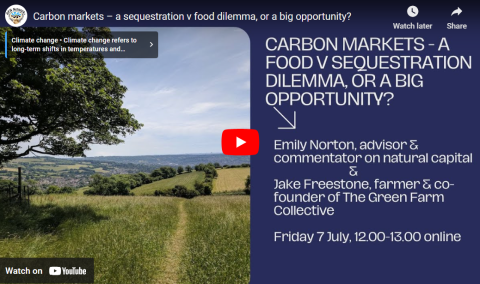The UK’s carbon market is many things: Some say it offers huge potential to create multi-functional landscapes that sequester carbon, still produce food, and offer vital income streams to farmers and land managers. Others say it’s the ‘Wild West’, with unscrupulous companies, dodgy measuring tools, and the potential for land grabs and reduced food production. Which is it, if any, of these? And what really is the potential to use the UK’s farmland to sequester carbon? As a farmer, what are the challenges and opportunities of selling carbon? What’s the experience of those who’ve done it?
In this webinar we discuss all of this with our two speakers:
Emily Norton, former director of rural research at Savills and Oxford Farming Conference director, and now freelance consultant and commentator, is known for her knowledge, prodding questions, and critical thinking.
Jake Freestone, farmer and co-founder of The Green Farm Collective, a collaboration between six pioneering UK farmers who met via the Soil Farmer of the Year competition. In partnership with carbon broker, Trinity Natural Capital Markets, they are building a community of farmers and investors to supply and buy carbon.


